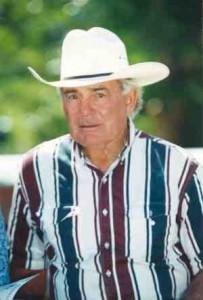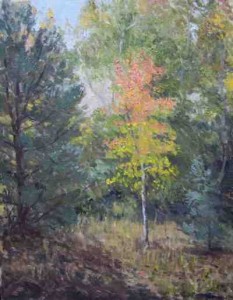Brief by Central Staff
Local History – November 2006 – Colorado Central Magazine
ONCE UPON A TIME, there was a town named Cleora about two miles east of Salida. It’s been fading away for more than a century, and the most recent step in the process came in October as Chaffee County prepared to vacate the long unused streets and alleys of Cleora.
It began, more or less, with William Bale, whose first appearance in local history was in 1866 as a rancher on Cottonwood Creek west of Buena Vista. He was among the vigilantes on the Committee of Safety in the Lake County War of 1875 that culminated in the July 3 murder of Judge Elias Dyer (son of the famous preacher John Dyer) in his courtroom in Granite, then the seat of Lake County.
At some point in the next three years, as Leadville began booming with silver production, Bale moved to a spot a mile or two downstream from the junction of the South Arkansas River with the main stream, and built a two-story tavern and hotel which was a stop on the Barlow & Sanderson stagecoach line.
At the time, two railroads — the Denver & Rio Grande, and the Atchison, Topeka & Santa Fe — had reached Cañon City. The stage route up the Arkansas circumvented the Royal Gorge to reach Texas Creek, then proceeded along the river to Bale’s Station, where passengers generally laid over for the night before heading to Leadville the next day.
The two railroads were battling, in court and with hired gunmen on the ground, for the Royal Gorge, which barely had enough room for one railroad. Upriver from the Gorge, they had land agents securing rights of way, as well as planning towns.
To quote from the History of Leadville and Lake County, Colorado, by Don and Jean Griswold, “Cleora was laid out in July or August [of 1878] a short distance above Bale’s hotel by persons associated with the AT&SF; and by fall was a growing community, not only in anticipation of becoming a railroad town, but also as a supply center for the mining districts at the head of the South Arkansas where there was considerable excitement because the ores found in the Monarch Mine were thought to be similar to the carbonate ores of the Leadville district.”
[Cleora townsite in October, 2006]
It was named for Bale’s daughter Cleora, and this appears to be her sole contribution to local lore, for we can find out nothing else about her. One reference said the name comes from a Greek word meaning praise or acclaim.
Main Street in Cleora ran parallel to the railroad tracks on the north side. On the other side of the tracks was River Street. Cross streets were Greenwood, Park, Colorado, and, to show which faction it supported in the Royal Gorge War, Santa Fe Street.
That was Cleora’s downfall. When the Rio Grande won the Royal Gorge War with a court decision in early 1880, it built to the west. The steam locomotives of the era needed service every 50 or 60 miles, so Cleora looked like a natural spot for the requisite railroad facilities. But the Rio Grande could make more money on land sales if it set up its own town on land it controlled. Thus Salida was founded, two miles upriver from Cleora.
Cleora residents quickly moved — often with their buildings on rollers — to Salida. The Cleora Post office closed in 1882, and by 1885, the Croffutt Guide said it “was once a place of ‘great expectations,’ but is now almost deserted.”
Cleora remained a railroad siding with a name, and it’s the home of a livestock sale barn and corrals — the barn sits atop Greenwood Street. The county is now in the process of abandoning any claim to the settlement’s former rights-of-way, which belong to the owners of the surrounding property. The current thoroughfares in Cleora are not based on its platted streets, and vacating its former streets and alleys will not affect any public routes now in use, which will formally become public roads.
So nothing on the ground will really change as Cleora’s old by-ways, including Santa Fe Street, fade into history along with the Denver & Rio Grande Railroad that killed the town before it too was merged away in 1996.


